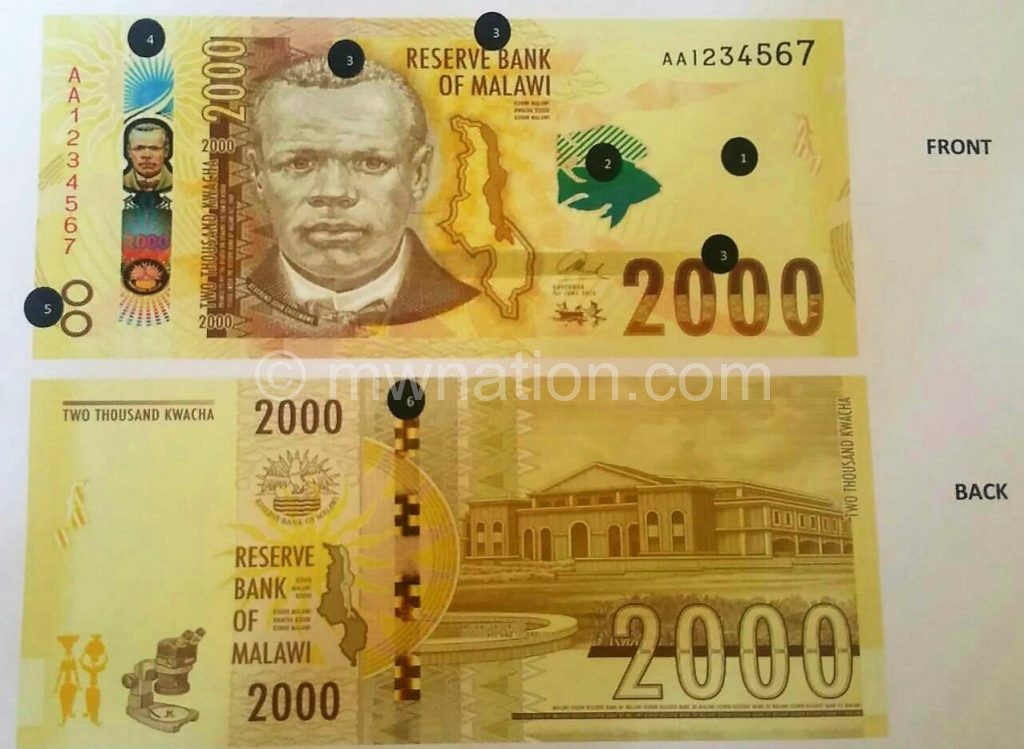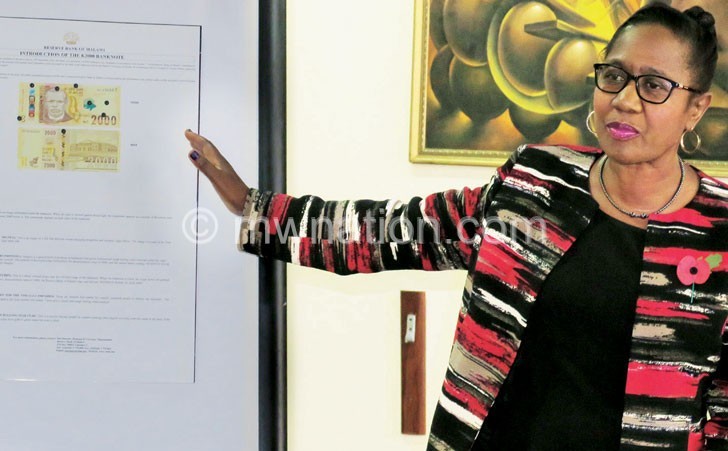RBM unveils K2 000 banknote
Soaring inflation has forced the Reserve Bank of Malawi (RBM) to introduce a K2 000 bank note which will be in circulation on December 19.
The central bank announced in Lilongwe yesterday that the introduction of the new banknote is in accordance with Section 17 of the RBM (Amendment) Act of 2010.

RBM Governor Charles Chuka said rising inflation has been forcing people to carry a lot of cash when conducting transactions.
Said Chuka: “The new K2 000 banknote will help Malawians a great deal because they will now be carrying less notes.
By introducing this note it does not mean that the economy is in very bad shape but it will be better even though it is a requirement that the highest note should be equivalent to $5.

We will in future be reviewing the development to see if we can introduce another higher note but for now this is what is best for the country.”
The governor said the number of K1 000 notes has increased from 13 percent in 2012 to 36 percent in 2016 and this was not a good development.
“We agree that the general public have been feeling the impact on rising prices of commodities, hence, the introduction of the K2 000 notes which will reduce costs, risks and overall the general public will benefit from the store of value.
This development will also help reduce congestion in banks and at ATM machines,” said Chuka.
But Chancellor College economics professor Ben Kaluwa said the introduction of the K2 000 banknote shows that the economy is in bad shape and is under heavy stress.
“At the break of the Federation of Rhodesia a n d N y a s a l a n d o u r economies were at par, but as time went by Zambia’s economy went hay wire followed by Zimbabwe and now Malawi is taking the same path.
“We have been arguing all along that the economy should not be messed up but what we are seeing is the opposite. Reality is catching up with us and we need to remove some of these subsidies and not live in denial,” he said.
Kaluwa said the country should get rid of some of the policies that are affecting the economy including subsidies such as Malata and Cement Subsidy. Echoing Kaluwa’s sentiments , the Consumers Association of Malawi (Cama) executive director John Kapito said the introduction of the K2 000 note shows that Malawi is moving towards hyperinflation.
“What this means now is that our economy has gone to the grave and any respect for consumers is now gone. This is what we have been arguing that our inflation figures are cooked up and Malawi’s inflation rate is hovering near 100 percent.
“Our wealth has been diminished by 100 percent and Malawians will now feel the pinch of a bad economy,” said Kapito.
The K2 000 banknote will bear the portrait of John Chilembwe while the motif on the back of the banknote will be the Malawi University of Science and Technology (Must) located in Thyolo District, depicting the theme of Social Development in Tertiary Education.
Banknotes were first introduced in 1973, starting with a K2 banknote which was discontinued and a K5 banknote was introduced. Currently, Malawi has K20, K50, K100, K200, K500 and K1 000 bank notes. According to Chuka, the Monetary Policy requires that the highest note in circulation should store a stronger value which is not the case with the K1 000 note in the current scenario.





